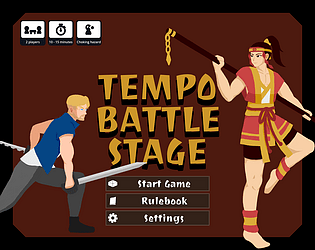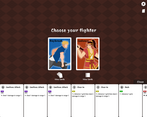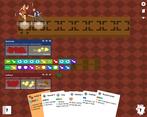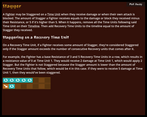Play board game
Tempo Battle Stage (Jam ver.)'s itch.io pageResults
| Criteria | Rank | Score* | Raw Score |
| Promising Idea | #9 | 4.000 | 4.000 |
| Well Planned Production | #26 | 3.125 | 3.125 |
| Overall | #26 | 3.156 | 3.156 |
| Reasonable Scope | #37 | 3.125 | 3.125 |
| Aesthetic / Concept Art | #47 | 2.375 | 2.375 |
Ranked from 8 ratings. Score is adjusted from raw score by the median number of ratings per game in the jam.
Solo Jammer
Solo
This was made by a solo jammer
Leave a comment
Log in with itch.io to leave a comment.







Comments
This could be very cool. I don’t have a lot of experience with board games with mechanics like this. The session length would allow new players to pick up the rules and playing strategy fairly quickly. Nice!
I'm very interested in this concept. It took me a few reads to get the way that turns progress but I think in an in game tutorial this could be easily cleared up. Like some of the other commenters, I too worry about the scope making a new board game from the ground up is a lot of work and then also making it into a game is a lot of work. I see that you made Ludochess last year so you definitely have some experience in this realm though. I really love the use of time as a resource, it fits into a theme of performance and combat.
In regards to your 2d vs 1d question, I am personally trying very hard to not overscope in this game jam. It has consistently been my downfall every game jam. So my advice is to consider the work that would be required for 2D, it might be really cool but could also be an incentive to work towards in Tempo Battle Stage 2. But that's just me, you may have different difficulties than me.
I didn't see any direct descriptions of the character's themes but I'm picturing like battling bards characters from your description. I look forward to seeing where the game goes from here! Good luck!
Overall, I like the idea for this project. I think the concept as it is presented would make for a fun and engaging game. I especially like the way that time has been broken down into a resource that is used to perform moves, and the way that this is represented to the player.
I think it would be interesting to see this game in action. It took me a few reads to put together a good idea of what you were trying to explain in your document regarding how time works and how character movement would work (granted I am a bit tired lol). But I think that would become a lot more clear in an actual game setting when the player can see what's going on, as long as some amount of tutorial exists to explain the different moving parts to players.
I have a few concerns regarding the scope of the project. You've divided most of the content into 'things-necessary-for-the-prototype' and 'things-necessary-for-the-release' well enough. I'm mostly concerned about how you plan on using reinforcement learning to train the AI to pick moves. This seems like a fairly involved process that might take a while to implement if you're unfamiliar with how to do it. If this is something you've done before, and know how to implement quickly, and you can estimate roughly how well the AI will turn out, then be my guest. Otherwise, you may benefit from taking some time to look into how this sort of training is generally done in whichever program you're using, and then deciding whether you want to continue down that route, or perhaps instead implement some sort of weighted decision-making algorithm that grades cards based on what the AI thinks it needs to do, and then picks the best choice.
Mainly I would recommend estimating how long you think it would take you to implement the different systems necessary to get this game up and running. If it turns out some of the systems don't totally work by the end of the prototype phase, I wouldn't be too worried. I would also estimate how long you think it will take to draw the art; you could do that by simply drawing one card or UI element, and extrapolating the time to the number of parts you need to make. Ultimately, I think this is for the most part a very doable project.
In regards to the "Outstanding Questions" in your document: you may want to consider first implementing forward-backward-only movement for the prototype portion of the jam (since that seems more straightforward), and then seeing whether a move to an expanded 2D grid would be a good fit for your project later, or if it's one you have time to implement. For that decision, I would take into consideration the way in which you implement attack range. If your implementation would allow a character to hit their opponent directly behind them, and you want to change that but can't do that in an easy way, then you may just want to stay with a linear system. If you're up to the challenge of figuring out all those shenanigans though, it could be pretty fun and great practice to problem-solve.
I hope the project goes well!
I really like the idea of turning a fighting game like Street Fighter into something turn-based that’s extremely time-aware. Laying out moves on a timeline sounds potentially very fun & intuitive. I’m not sure I understand the mechanics 100% yet though. (e.g. What constitutes “processing the effects” on the timeline? How are pauses/delays/feints handled? How much of your opponent’s timeline can you see? What happens if two attacks overlap in time?)
Limiting your scope to just two characters is a good idea—balancing different decks/move-sets & characters sounds challenging/time-consuming.
Thinking about your question about spatial representation - I think there's an argument to be made for both. 1D movement feels like an interesting abstraction and keeps things very focused. 2D movement provides a much richer possibility space, at the cost of extra mental load and possibly extra dev time. In 2D space, you can have faster/stronger attacks that are focused directly ahead versus slower/weaker attacks that are sweeping. You could also explore knock-back based on the direction of swinging attacks. (I’m imagining movement and attacks being grid-based, though diagonals might be a little weird.)
I wonder about the viability of Reinforcement Learning to train an AI over the course of the jam—have you done this before? I don't have much experience, but it seems like this often takes longer than expected. 2D space could exacerbate that problem too. It might be good to consider some basic hardcoded patterns / reactions as a fallback.
I'm curious to see how this idea develops!